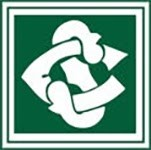
Year 7 Mathematics
7MAT Course DescriptionTeacher in Charge: Ms K. Playle.
By the end of Year 7 students should be working at Level 3 of the New Zealand curriculum (NZC). The Solway College Year 7 program supports girls to achieve through a strong focus on numeracy. Once students have a firm grasp of aspects of numeracy to Level 3 of the NZC, they begin to explore algebra, geometry, measurement, statistics and probability. For those students already working at Level 3 of the NZC on arrival at Solway College, there are multiple opportunities to extend mathematical skills and understanding.
Course Overview
Term 1
Numeracy including: Number strategies, use of a range of additive and simple multiplicative strategies with whole numbers, fractions, decimals, and percentages. They will achieve this by knowing basic multiplication and division facts, counting sequences for whole numbers, know how many tenths, tens, hundreds, and thousands are in whole numbers, fractions and percentages in everyday use.
Term 2
Numeracy including: Number strategies, use of a range of additive and simple multiplicative strategies with whole numbers, fractions, decimals, and percentages. They will achieve this by knowing basic multiplication and division facts, counting sequences for whole numbers, know how many tenths, tens, hundreds, and thousands are in whole numbers, fractions and percentages in everyday use.
Algebra including: Connecting members of sequential patterns with their ordinal position and use tables, graphs, and diagrams to find relationships between successive elements of number and spatial patterns.
Term 3
Geometry and measurement:
Measurement: Use linear scales and whole numbers of metric units for length, area, volume and capacity, weight (mass), angle, temperature, and time. Find areas of rectangles and volumes of cuboids by applying multiplication.
Shape: Classify plane shapes and prisms by their spatial features.
Represent objects with drawings and models.
Position and orientation: Use a co-ordinate system or the language of direction and distance to specify locations and describe paths.
Transformation: Describe the transformations (reflection, rotation, translation, or enlargement) that have mapped one object onto another.
Term 4
Statistical investigation: Conduct investigations using the statistical inquiry cycle: gathering, sorting, and displaying multivariate category and whole-number data and simple time-series data to answer questions
identifying patterns and trends in context, within and between data sets, communicating findings, using data displays.
Statistical literacy: Evaluate the effectiveness of different displays in representing the findings of a statistical investigation or probability activity undertaken by others.
Probability: Investigate simple situations that involve elements of chance by comparing experimental results with expectations from models of all the outcomes, acknowledging that samples vary.